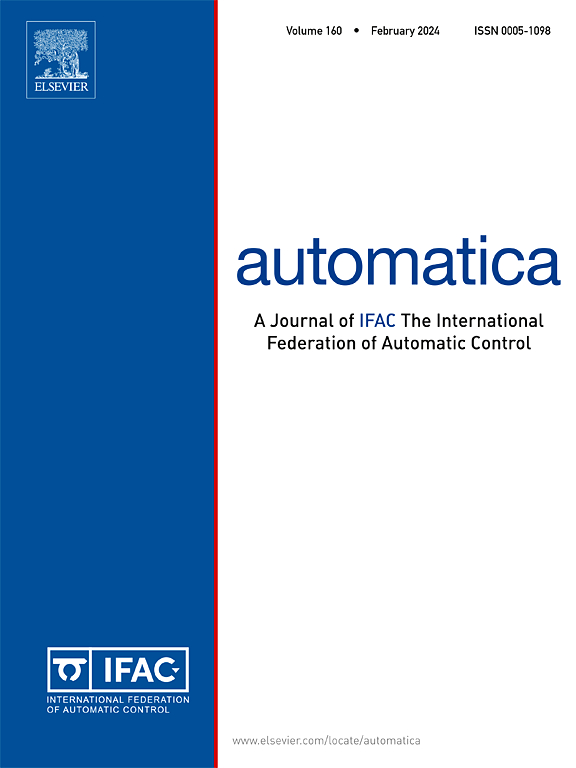Switching multiplicative watermark design against covert attacks
IF 4.8
2区 计算机科学
Q1 AUTOMATION & CONTROL SYSTEMS
引用次数: 0
Abstract
Active techniques have been introduced to give better detectability performance for cyber-attack diagnosis in cyber–physical systems (CPS). In this paper, switching multiplicative watermarking is considered, whereby we propose an optimal design strategy to define switching filter parameters. Optimality is evaluated exploiting the so-called output-to-output gain of the closed-loop system, including some supposed attack dynamics. A worst-case scenario of a matched covert attack is assumed, presuming that an attacker with full knowledge of the closed-loop system injects a stealthy attack of bounded energy. Our algorithm, given watermark filter parameters at some time instant, provides optimal next-step parameters. Analysis of the algorithm is given, demonstrating its features, and demonstrating that through initialization of certain parameters outside of the algorithm, the parameters of the multiplicative watermarking can be randomized. Simulation shows how, by adopting our method for parameter design, the attacker’s impact on performance diminishes.
求助全文
约1分钟内获得全文
求助全文
来源期刊

Automatica
工程技术-工程:电子与电气
CiteScore
10.70
自引率
7.80%
发文量
617
审稿时长
5 months
期刊介绍:
Automatica is a leading archival publication in the field of systems and control. The field encompasses today a broad set of areas and topics, and is thriving not only within itself but also in terms of its impact on other fields, such as communications, computers, biology, energy and economics. Since its inception in 1963, Automatica has kept abreast with the evolution of the field over the years, and has emerged as a leading publication driving the trends in the field.
After being founded in 1963, Automatica became a journal of the International Federation of Automatic Control (IFAC) in 1969. It features a characteristic blend of theoretical and applied papers of archival, lasting value, reporting cutting edge research results by authors across the globe. It features articles in distinct categories, including regular, brief and survey papers, technical communiqués, correspondence items, as well as reviews on published books of interest to the readership. It occasionally publishes special issues on emerging new topics or established mature topics of interest to a broad audience.
Automatica solicits original high-quality contributions in all the categories listed above, and in all areas of systems and control interpreted in a broad sense and evolving constantly. They may be submitted directly to a subject editor or to the Editor-in-Chief if not sure about the subject area. Editorial procedures in place assure careful, fair, and prompt handling of all submitted articles. Accepted papers appear in the journal in the shortest time feasible given production time constraints.
 求助内容:
求助内容: 应助结果提醒方式:
应助结果提醒方式:


